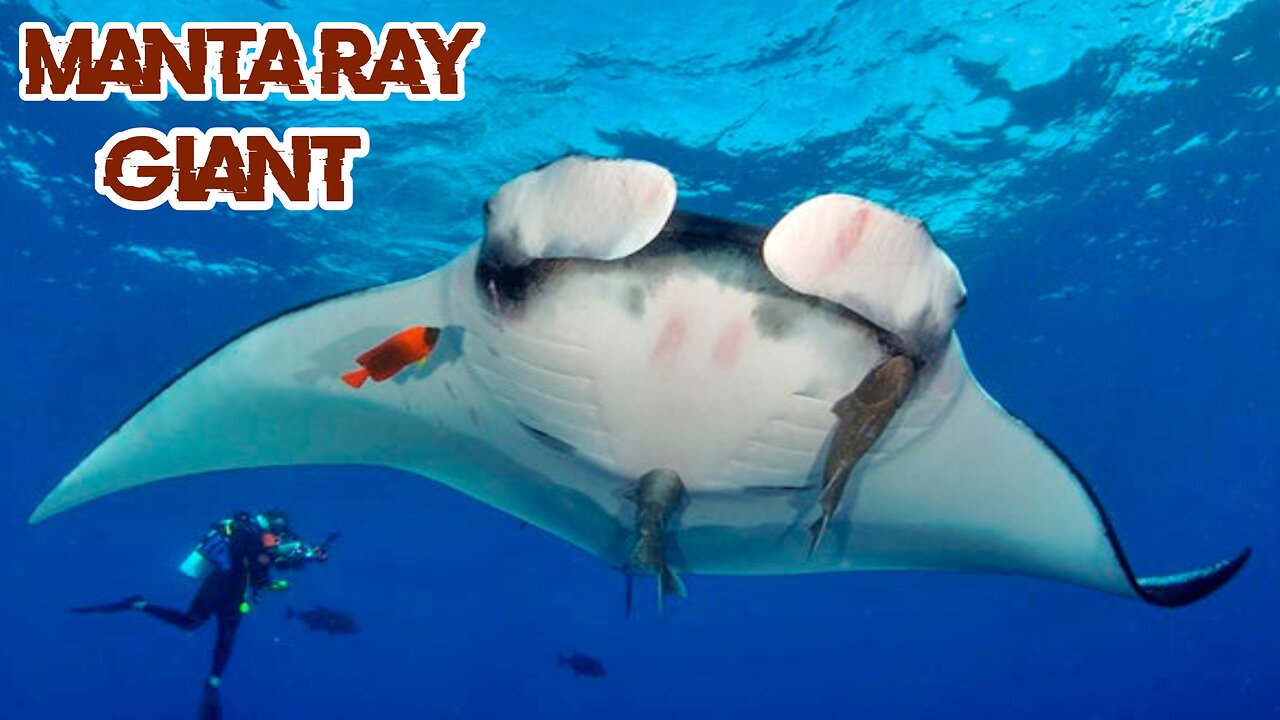Premium Only Content

Enchantment of the Amazing Giant Manta Ray in the Ocean
Manta rays are amazing sea creatures with unparalleled charm and grace. In this video, we will explore more deeply about manta rays, dig up information about their characteristics, behavior, habitat, importance to marine ecosystems, as well as conservation efforts being made to protect this species.
Physical and Anatomical Characteristics:
Manta rays have a large, flat body with elongated pectoral fins, resembling wings. The giant manta ray or (Manta birostris) can reach a body width of up to 7 meters or more, making it one of the largest fish in the world. Coral manta rays or (Manta alfredi) tend to be smaller, with a body width of about 3 to 5 meters. Their bodies are covered with smooth, elastic skin, with a black or dark brown pattern on the upper body and white on the underside. This color pattern helps them blend in with their surroundings.
Manta rays can be found in various tropical and subtropical waters around the world. They are more common in areas rich in plankton, such as open water, coral lagoons and waters around islands. Some areas notable for their large populations of manta rays include the Maldives Islands, the Galapagos Islands, Komodo Island in Indonesia, and the Raja Ampat Islands in Indonesia.
Manta rays often gather in certain locations to carry out activities such as cleaning the body and looking for food. They take advantage of strong ocean currents to help them swim and filter food. Manta rays primarily feed on plankton, such as zooplankton and krill, which they catch using special structures at the front of their mouths called rakers.
Behavior and Social Interaction:
Manta rays are social animals and are often seen swimming in small groups called aggregations. They are also known for their habit of jumping out of the water, called breach, which is believed to be their way of ridding themselves of parasites or of communicating with other members of the group.
Manta rays also frequent cleaning stations, which are areas where cleaning fish feed on parasites and dead tissue from their skin. Manta rays swim slowly near cleaning stations, giving cleaning fish such as liposars and sucker fish a chance to clean themselves.
#viral #Farmanimal #Mantaray
-
 LIVE
LIVE
The Nick DiPaolo Show Channel
3 hours agoTrump Waiting On Tariff Ruling | The Nick Di Paolo Show #1788
1,021 watching -
 1:23:59
1:23:59
Dr. Drew
7 hours agoSalty Cracker: Dr. Drew's Birthday, Sydney Sweeney's Jeans, Rosie's Apology To MAGA & More News From Our Clown World – Ask Dr. Drew
76.9K17 -
 LIVE
LIVE
Rallied
22 minutes agoWarzone Solo Challenges
81 watching -
 LIVE
LIVE
BonginoReport
1 hour agoMAHA Madness: RFK Jr. vs Newsom - Nightly Scroll w/ Hayley Caronia (Ep.127) - 09/04/2025
3,599 watching -
 1:58:36
1:58:36
Redacted News
2 hours agoUkraine bans Christians, Trump Sends Troops to Chicago, German AFD members being murdered | Redacted
81.9K56 -

Michael Franzese
1 hour agoMy Daughters CONFRONTED Me About Being a Mobster Dad
2.48K -
 24:02
24:02
Kimberly Guilfoyle
4 hours agoCartel Strikes: Breaking News Coverage! | Ep.251
12.5K6 -
 1:01:36
1:01:36
Sarah Westall
2 hours agoBlackrock & the WEF Collaborate for World Dominance, Free Agency with AI w/ Reinette Senum
17.7K -
 3:08
3:08
Michael Heaver
13 hours agoOutraged UK Sends EMPHATIC Message
1103 -
 1:20:15
1:20:15
vivafrei
4 hours agoRFK Jr. Takes on the Pharma WHOORES! Toddler-Assaulter Granted BAIL? COMPLYE WITH CRIMINALS! & more
108K60